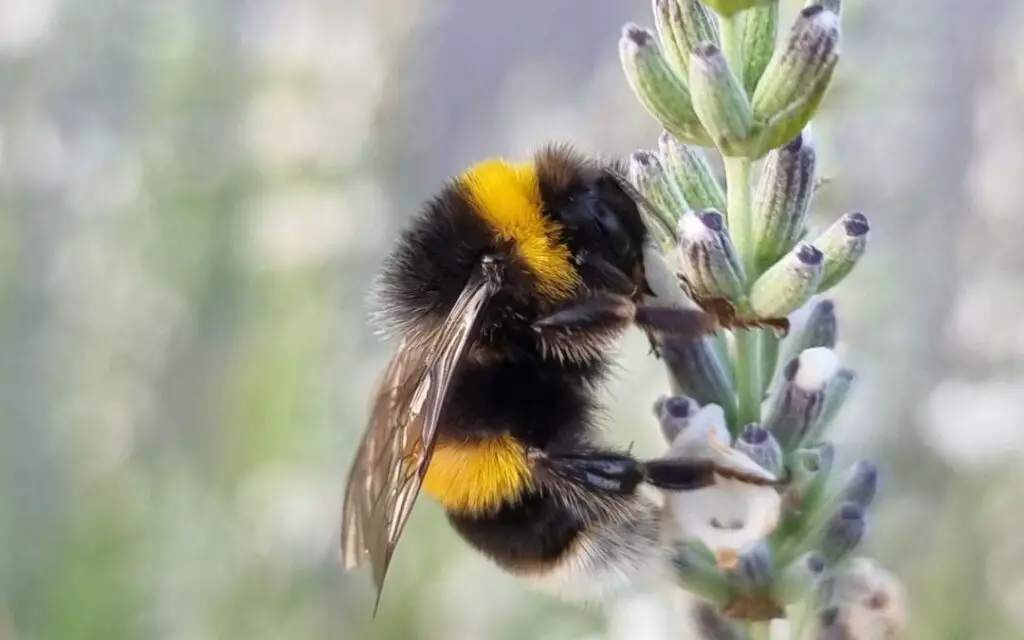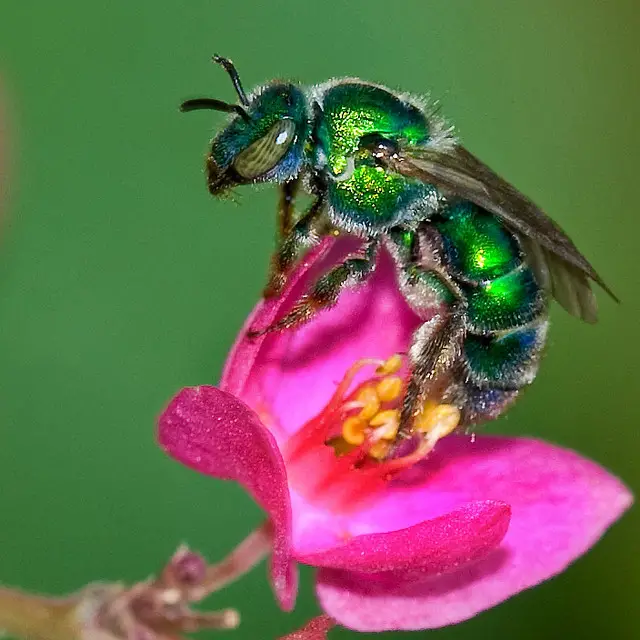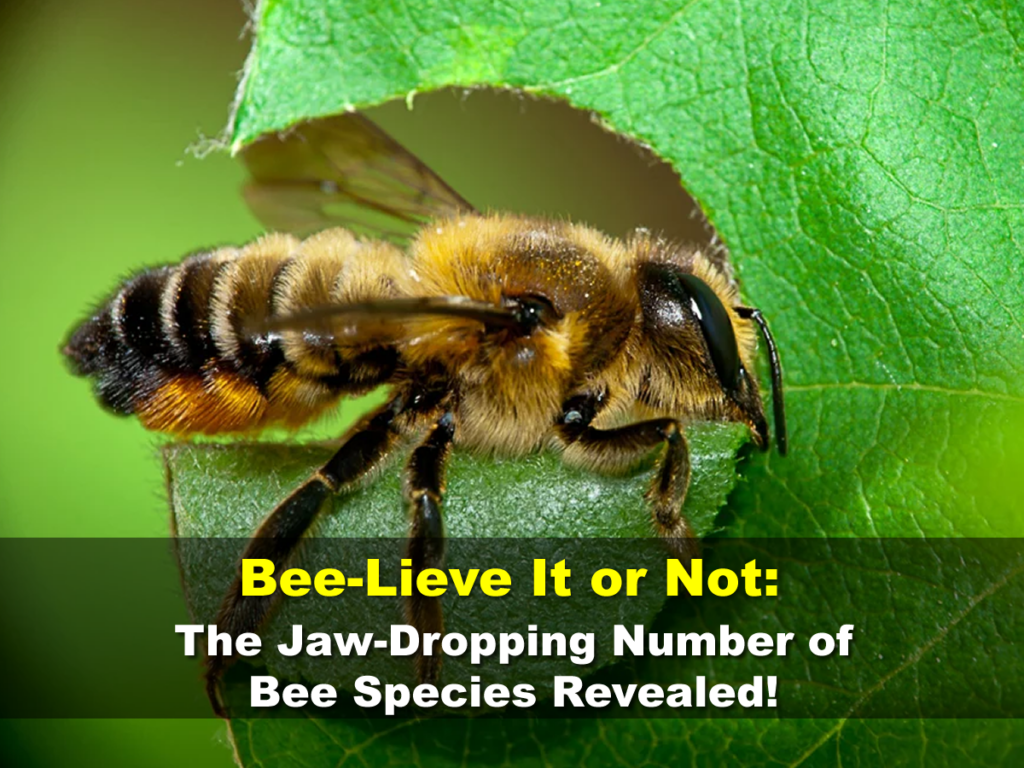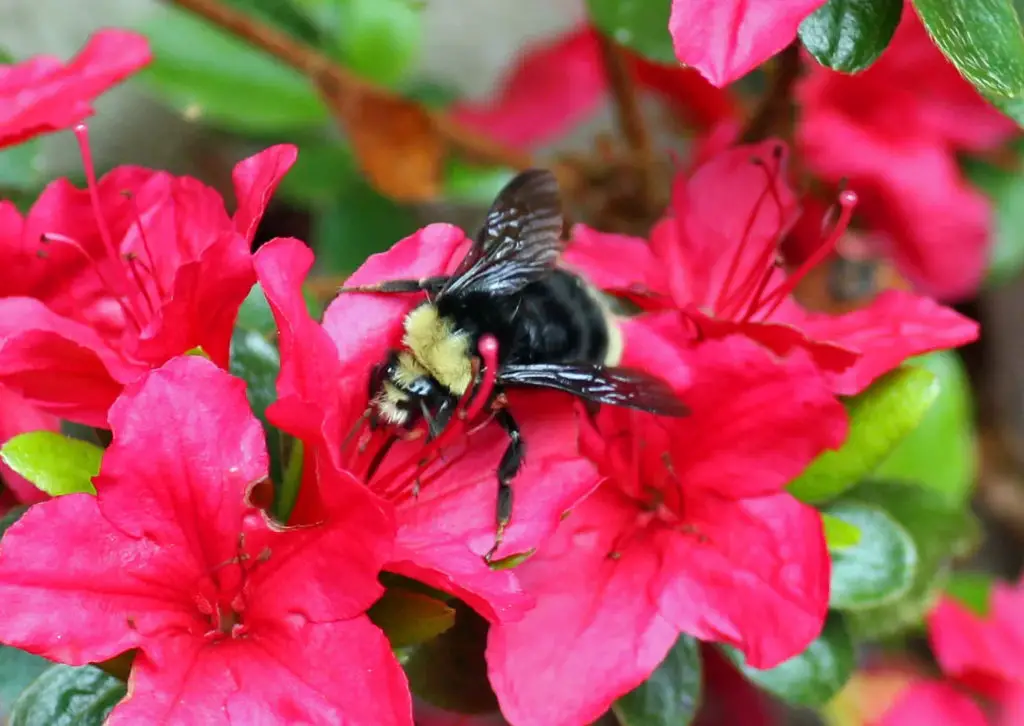Affiliate Disclaimer - As an Amazon Associate I earn from qualifying purchases.
It supports the website. So, Thank you
I was recently talking to a friend about the various types of bees I’d seen buzzing around the garden last summer. This obviously caught hold of her curiosity as the next thing I knew she was quizzing me on how many types of bees there are.
Amazingly, there are more than 20,000 bee species in the world and these are divided into 7 different families. It’s actually believed that there are around 2 trillion individual bees in the world, but of course, this is just an educated guess.
While it would be impossible for me to sit here and write about every single one of the 20,000 bee species, I do want to share some information on the most common and interesting species.
Table of Contents
What Are The Different Bee Families
Before I get into introducing you to the various types of bees you might see in your backyard, it’s worth looking at the various families.
The Apidae family is the largest and contains just shy of 6000 individual species. This family is made up of both solitary and colony bees.
The next bee family is the Megachilidae family which contains around 3000 species. The largest type of bee in the world is found within this family called the Megachile pluto which can grow up to 0.9 inches in length.
Next up, we have the Andrenidae family of bees which contains around 2700 different species. This is followed by the Colletidae family which is slightly smaller at 2000 species. What’s special about these bees is the way that they build their nests with a waterproof substance.
There is also the Halictidae bee family which is slightly larger with around 3500 species. What I personally love about these bees is that some of them have metallic coloring. They’re a tropical type of bee sometimes called sweat bees owing to their attraction to human sweat; gross!
The Metillidae family is one of the smallest families of bees and only has around 160 species within it. However, it’s not as small as the Stenotritida family with just 21 species which are found exclusively in Australia.
Types Of Bees That You Might See In Your Garden
If you spend any time at all outdoors then the chances are that you’ll see a variety of bee species. For most people, however, no attention is paid and a bee is just a bee. But when you begin to look at the subtle differences, you’ll start to be able to tell these bees apart.
The Honey Bee
The honey bee is one of the most well-known and common bees in the world. There is the European honey bee which we’re used to seeing as well as the Asian honey bee. They’re part of the Apidae family and what’s fun when spotting them is that it’s easy to tell the males and females apart.
You see, the female worker bees’ abdomens are split into six sections whereas the drones have seven sections on the abdomen.
Regardless of gender, honeybees are a hairy little bunch. So much so that their hairs are very easy to see and are all over their bodies, including on their tongues!
Another great way to identify a honey bee is to look at its legs. With these bees, there is no need to dig so they lack tibial spurs that you might see on something like a carpenter bee. You might also notice that there is a flat part of the hind legs which is used for carrying pollen.
The Bumble Bee
Another member of the Apidae family and also one of the other most well-known bees is the bumble bee. They’re one of my personal favorites and have fuzzy bodies that come in many colors.
If you’ve spotted a bumble during the later part of summer or fall then there’s a good chance it’s a male whereas the females are active all year.
When looking at bumble bees, you might have your work cut out since there are cuckoo versions and true versions of each gender. If the bee has hairy back legs and a short face as well as lacking pollen baskets then it’s a cuckoo. You’ll also notice that the wings tend to be darker
One of the traits that can help to identify a bumble bee is the tail color which could be either white, red or uniform with the rest of the body. The color of the body can vary quite a bit with some bumble bees being completely black while others are banded. The bands might be white, yellow, orange, or red and there may be three or four depending on the individual.

The Sweat Bee
One of the most commonly sighted bees in the United States is the sweat bee which is a species that loves to be around humans. Why? Well, they love to feed on our sweat!
It might sound disgusting but it’s good enough for the bees. What’s more, they’re not an aggressive bunch other than tickling you as they explore your body.
These bees are part of the Halictidae family and are one of the smaller species you might find in your backyard. In fact, they rarely grow much bigger than a quarter of an inch; how cute!
To identify a sweat bee, other than size, you might want to look at its coloration which is usually black and yellow stripes over the abdomen. They burrow under the ground and most species are solitary although there are a few exceptions to this.
In the USA, there are around 400 species of sweat bees from the genus known as Lasioglossum which are smaller than the sweat bees I have already talked about.
The Green Metallic Sweat Bee
Staying with the sweat bee species, I had to talk about the green metallic sweat bee purely because of how beautiful it is. In North America, there are only four species of green metallic sweat bee and, as their name suggests, they have a stunning metallic green coloration.
If you have a herb garden then you’ll be very likely to see this species buzzing around the plants. However, they’re also partial to things like daisies and asters.
When it comes to nesting, the green metallic sweat bee is a solitary species that will burrow under the ground. However, be careful not to get this species mixed up with the cuckoo wasp that does look very similar. To tell them apart, look out for a slightly more turquoise coloration in the wasp.

The Carpenter Bee
Carpenter bees have something of a bad reputation and that’s mainly because of where they build their nests. They’ll bore into wooden structures in the garden and homeowners can have a really difficult time getting rid of them. But when you look at the grand scheme of things, they don’t actually do that much damage and they’re not harmful to humans.
There are two types of carpenter bees; large and small. The bigger ones can look a bit scary but I assure you, they’re not. To identify them, look for bees that have a mainly black coloration with brown or yellow markings on the thorax.
Some people get the large carpenter bee mixed up with certain types of bumble bees but you can tell them apart by looking at the abdomen which is shiny in carpenter bees and hairy in bumbles.
The small carpenter bee is one of the 20 species found in the United States and Canada and they only grow to about a quarter of an inch. They are dark in color and often have a metallic hue. But what really gives away their identity is their shape. The abdomen is shaped like a barrel while the head is very blocky. You can also look out for white markings on the face.

The Long Horned Bee
Long-horned bees aren’t quite as common as some of the others I have discussed in this guide but you may see them on occasion. If you have sunflowers in your garden then there’s more of a chance of spotting these bees on their favorite flowers where they are active both during the day and at night; not something that’s common in many bee species.
One of the most obvious features of the long-horned bee, as you might guess from the name, is its long antenna. Although this is only seen in males.
In North America, there are around 200 different species of long-horned bees and they’re mid-sized, typically growing to around half an inch in length.
The Leafcutter Bee
Leafcutter bees are among some of the hardest working, especially the females which will chew on leaves, cutting them into smaller pieces before returning them to the nest. These leaves are turned into cups which the bees then use to lay their eggs in.
Like many other bee species, the leafcutter bee nests in tunnels so they may be found within the walls of your house or other structures. That said, they’re also happy to nest in hollow flower stems.
Leafcutter bees are medium-sized and grow to around half an inch. Instead of carrying pollen on their legs, like a lot of bees, leafcutters carry it on the bottom of the abdomen.

The Carder Bee
The carder bee is one of more than twenty North American species but they’re mainly found in the southwestern part of the United States. There are some species that are common in the north but they’re certainly nowhere near as abundant.
Growing to about half an inch in length, the carder bee can be identified by its hairless abdomen. Just like the leafcutter bee that I talked about earlier on, these bees don’t have pollen baskets on the legs but instead transport pollen on the underside of the belly.
As is the case with a lot of bee species, carder bees will nest in tunnels. It’s the females that do the lion’s share of the work in building the nests while the males will aggressively defend them from potential threats. If you’re looking to attract these bees to your garden then I would suggest planting things like foxgloves and lamb’s ear.
Final Thoughts
Isn’t it amazing to think that there are more than 2 trillion bees in the world? But they’re not all the same type and if you’ve ever wondered how many types of bees there are, you’ll be amazed to learn that there are around 20,000 species.
These species can be placed into one of seven families and bees are found almost all over the world. In North America, there are lots of species you might come across in your garden including honey bees, carder bees, sweat bees, and the beautiful bumble.
So, next time you’re in the garden, why not take a look at which bee species you can spot!




